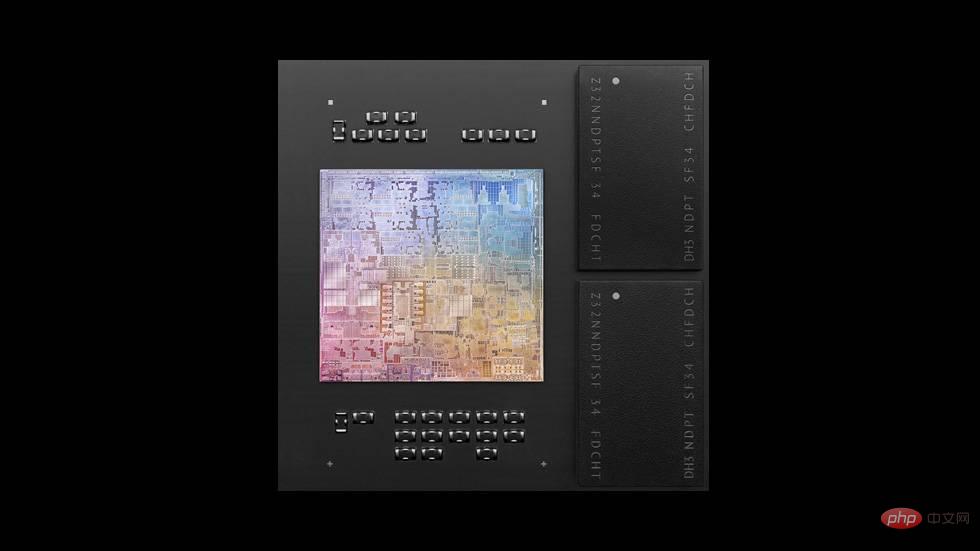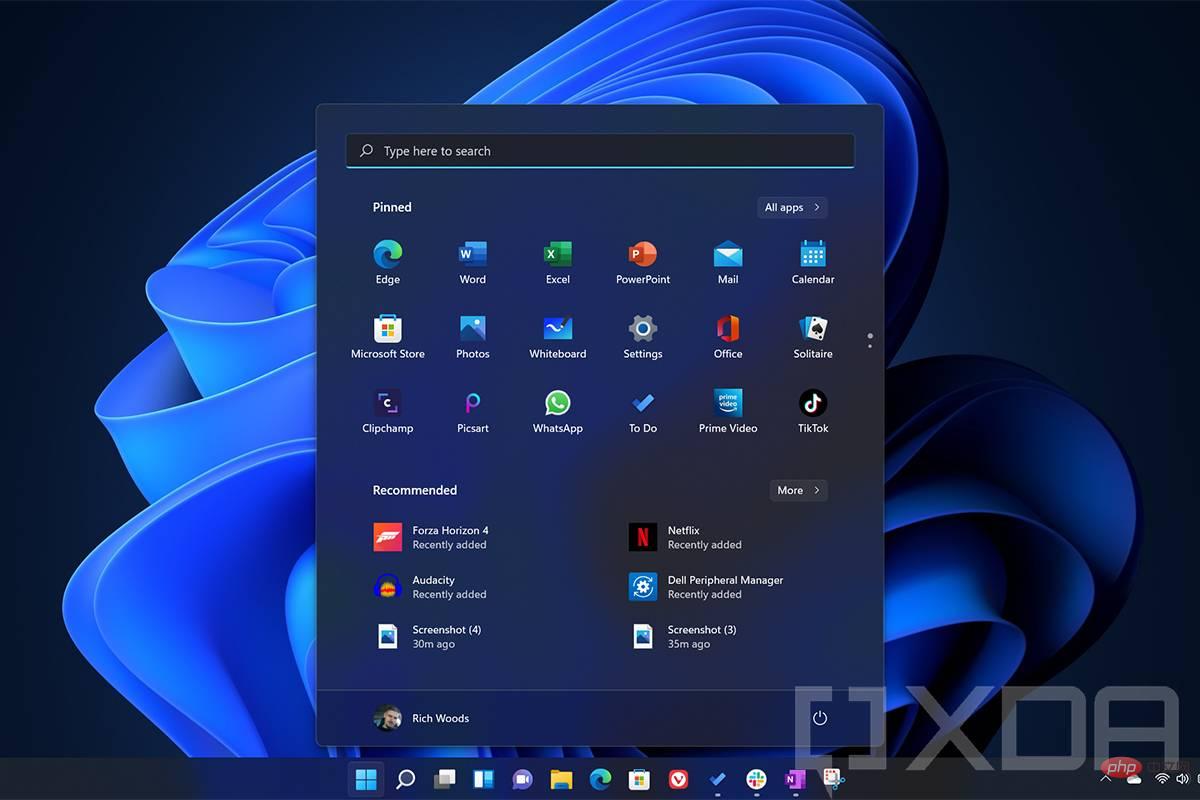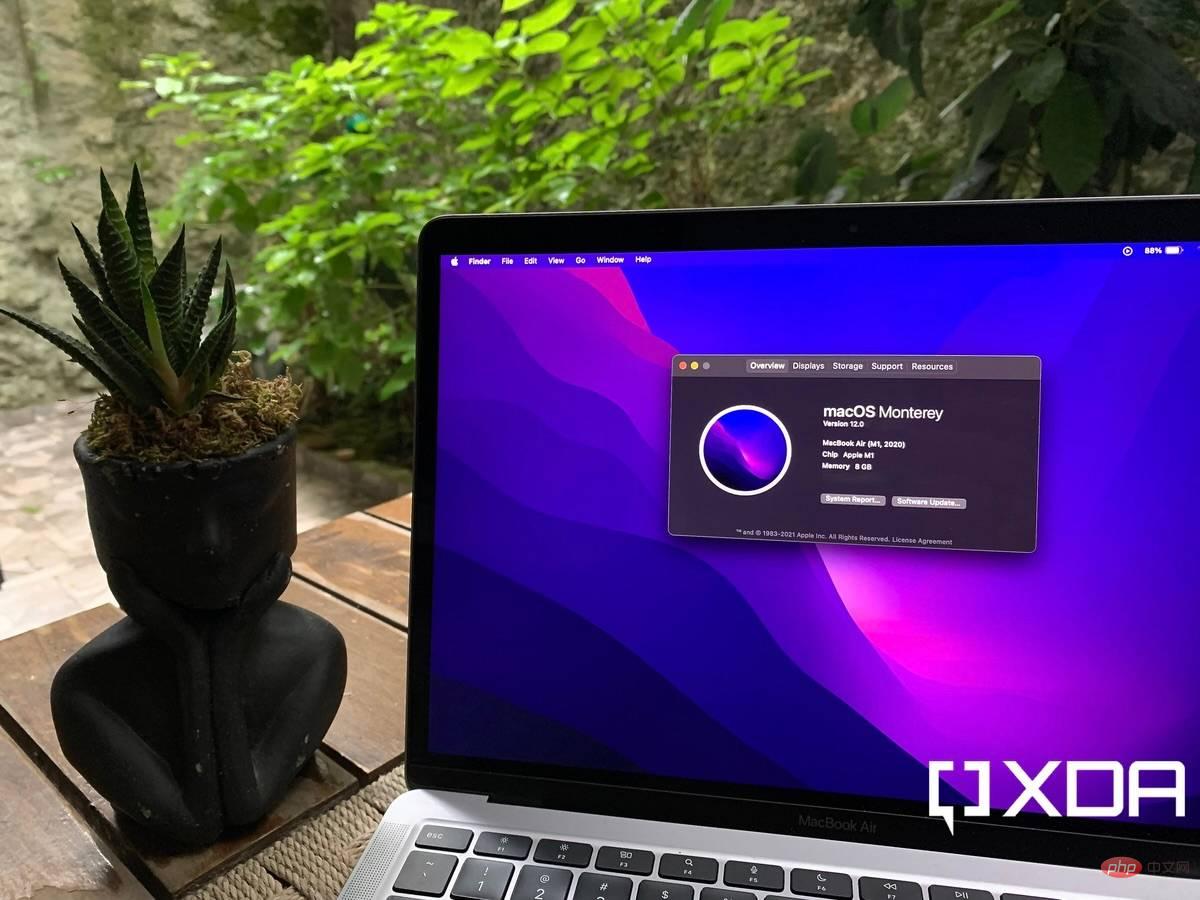Lenovo ThinkPad X1 Carbon Gen 10 vs. Apple MacBook Air: Which is better?
Lenovo ThinkPad X1 Carbon Gen 10 vs. MacBook Air: Performance
Apple’s MacBook Air is powered by the original M1 chip that the company debuted a few years ago. While this isn't the most powerful chip in the current M1 lineup, we think it can still compete with many Intel and AMD chips. It's an octa-core chip that combines four high-performance "Firestorm" cores with four high-efficiency "Icestorm" cores. It strikes a good balance between performance and power efficiency.
On the other hand, the Lenovo ThinkPad X1 Carbon Gen 10 laptop is powered by Intel’s new 12th generation Alder Lake processors. We're looking at 12th generation vPro processors, which means the laptop can deploy a suite of enterprise and security features. Lenovo uses both P-series and U-series processors for this laptop, so you have a variety of processor options to choose from. While the Alder Lake P series stars the Intel Core i7-1280P, the U series features the Intel Core i7-1265U as its top chip.
Although we haven’t had a chance to use it yet with the Alder Lake P Series and U Series chip-powered devices, but we recommend checking out our Alder Lake P-Series vs. U-Series comparison to find out some key differences between the two. We expect Intel's new 28W P-series processors to beat Apple's M1 chips, and it will be interesting to see how the U-series chips fare against the M1.
Beyond raw CPU performance, there are other factors to consider, including the Apple M1's unified memory technology, powerful graphics unit, and more. We think the Apple M1 chip's graphics unit is better than Intel's Iris Xe graphics unit. The Lenovo ThinkPad X1 Carbon Gen 10 relies on integrated Iris Xe graphics rather than a separate unit. This may be beneficial in terms of overall power efficiency, but we doubt it will be able to keep up with the M1's graphics unit.
In terms of memory, the ThinkPad X1 Carbon Gen 10 has up to 32GB LPDDR5 RAM. MacBook Air powered by the M1 chip comes with up to 16GB of memory. However, Apple is using unified memory technology to significantly increase speeds and reduce latency. The Apple M1 also uses the same memory for graphics workloads. If you're curious about storage options, both laptops can be purchased with up to 2TB of SSD. You can upgrade the storage on the ThinkPad X1 Carbon Gen 10, but not the MacBook Air.

Unified Memory Architecture on the Apple M1 Chip
We thought this would be a good time to talk about battery life as well. We're looking at a slightly larger 57Whr battery inside the ThinkPad X1 Carbon Gen 10 laptop, compared to the 49.9Whr battery inside the MacBook Air. While this makes the ThinkPad X1 Carbon look better on paper, we think the MacBook Air will last longer on a charge. The M1 chip is known to deliver impressive performance per watt. In addition to unified memory, better hardware and software integration with macOS, and more, overall battery performance is also better. We haven't gotten our hands on a laptop powered by Intel's new Alder Lake U-series chips yet, though, so we suggest you keep your eyes peeled for when we get a chance to get a detailed breakdown of U-series power efficiency. Test it.
Windows or macOS?
As we've highlighted in some of our other comparison articles involving Apple computers, the operating system also plays a huge role in deciding which one you should buy here. The Lenovo ThinkPad X1 Carbon can be purchased with Windows 11 Pro, Ubuntu, or Fedora. MacBook Air runs on macOS Monterey out of the box. For those with an older MacBook, the MacBook Air is an obvious choice. Likewise, if you're used to Windows or Linux operating systems, the ThinkPad X1 Carbon Gen 10 may be your best choice.
For beginners, both operating systems are equally great And intuitive, so the choice is yours, really. We’re not going to pick an outright winner here, as that’s a different discussion topic for a separate article in itself. However, if you are a content creator looking to buy a machine to do basic creative work, then consider buying a MacBook Air. This is because the MacBook Air is known to perform better in a variety of content creation workloads, including graphic design, video editing, and more. MacBook Air also benefits from Apple's excellent hardware and software integration, allowing these applications to perform better overall while using less power.
Showcase
All variants of the Lenovo ThinkPad X1 Carbon Gen 10 come with a 14-inch 16:10 IPS panel, while the MacBook Air comes with a 13.3-inch IPS Retina display. Both laptops have 16:10 IPS panels, but the ThinkPad X1 Carbon Gen 10 has a slightly larger display. Additionally, the ThinkPad X1 Carbon Gen 10 also has a touchscreen option, something the MacBook Air lacks. If you want a laptop with a larger display and touchscreen options, the choice is pretty obvious. It's worth noting that you also get a higher-resolution panel option with the ThinkPad X1 Carbon, while there's no such option available with the MacBook Air. It's also worth pointing out that the ThinkPad comes with privacy protection, while the MacBook has no such privacy features at all.
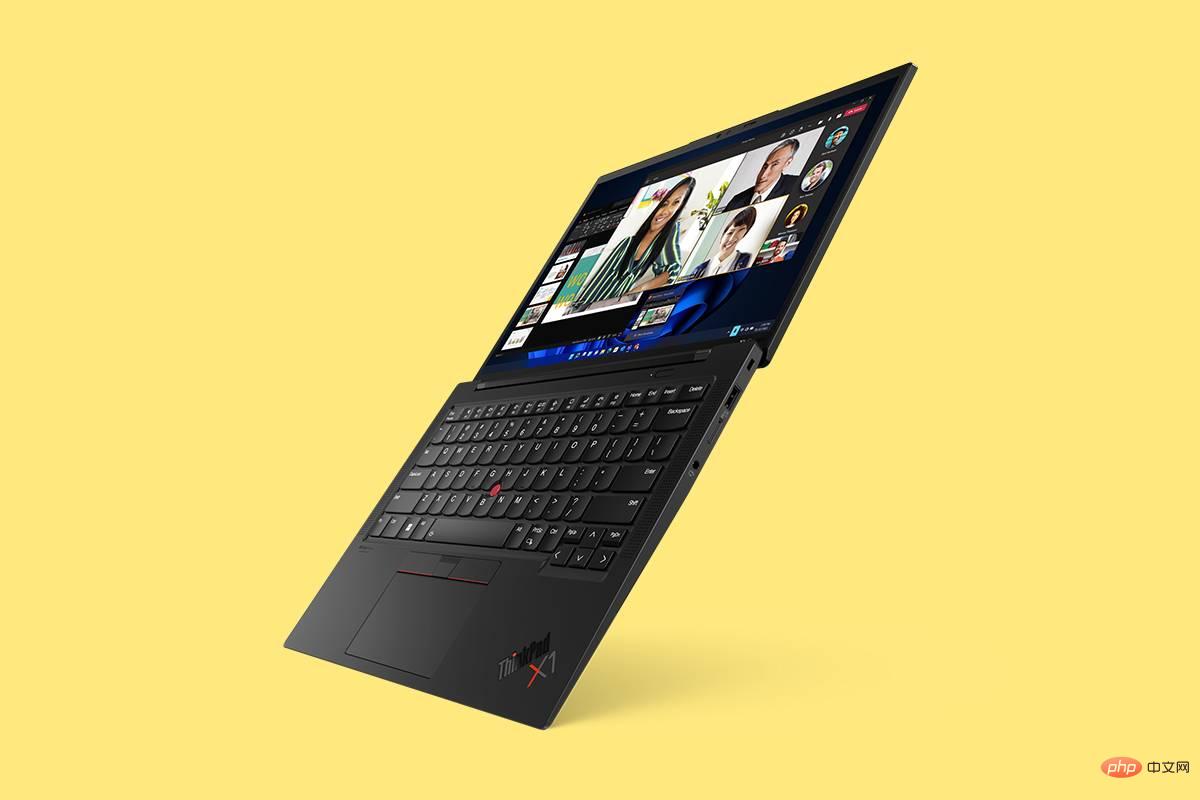
# Lenovo also has some big numbers when it comes to color accuracy, although the MacBook Air itself is pretty good in terms of picture quality. We didn't have a chance to test these laptops side-by-side for comparison, so we can't say for sure which one is better. If we were to choose one based on the spec sheet, then we would say that the Lenovo ThinkPad X1 Carbon Gen 10 definitely has the edge over the MacBook Air. That being said, neither laptop's display is particularly bad. They should both be good enough for most users, as well as for a variety of use cases including day-to-day work, media consumption, and more.
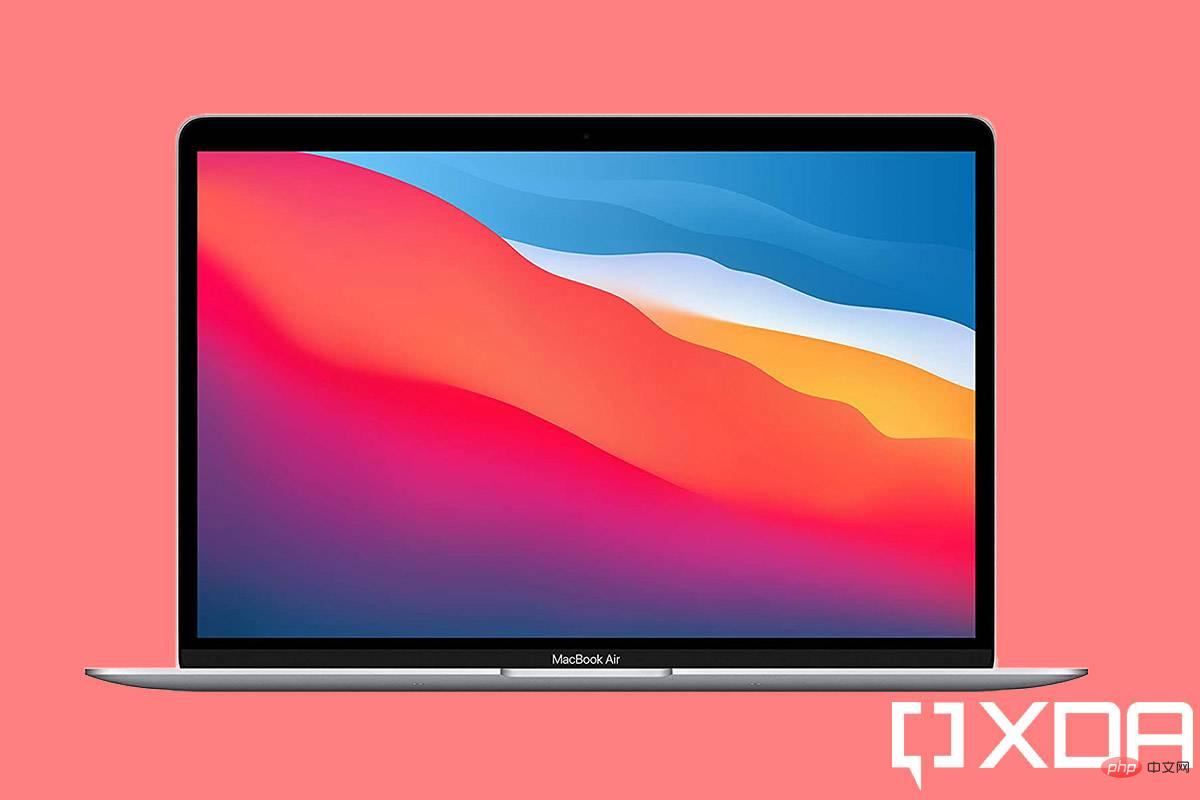
Both laptops have a webcam at the top of the display, but Lenovo offers a 1080p camera option on the ThinkPad X1 Carbon Gen 10 laptop. You still only get a 720p webcam on the base model, but at least there's the option to add an upgraded sensor. Apple's MacBook Air only comes with a 720p HD FaceTime camera, which will be upgraded this year. Lenovo also offers an optional infrared camera variant to support Windows Hello facial recognition. Apple's MacBook Air comes with a TouchID fingerprint scanner for security.
Design and Ports
The Lenovo ThinkPad X1 Carbon Gen 10 looks exactly like many other ThinkPad notebooks on the market. It has the familiar black chassis. There's another black carbon fiber weave design that looks great too. However, both variants use carbon fiber, hence the name. That being said, the ThinkPad X1 Carbon is no longer the lightest laptop out there. This one weighs 1.12kg, making the ThinkPad X1 Nano the lightest ThinkPad laptop under 1kg. We'd still choose the ThinkPad X1 Carbon over the ThinkPad X1 Nano to retain all the legacy ports.
While the Lenovo ThinkPad X1 Carbon Gen 10 is thinner, the MacBook Air has an overall smaller profile. The MacBook Air also has a very familiar design, as Apple hasn't changed it in years. The variant with the M1 chip is available in three different colors - silver, space gray and gold - but they all have the same metal chassis. It's a very minimalist design, and many would prefer something flashier like a carbon weave texture, but that's all very subjective.
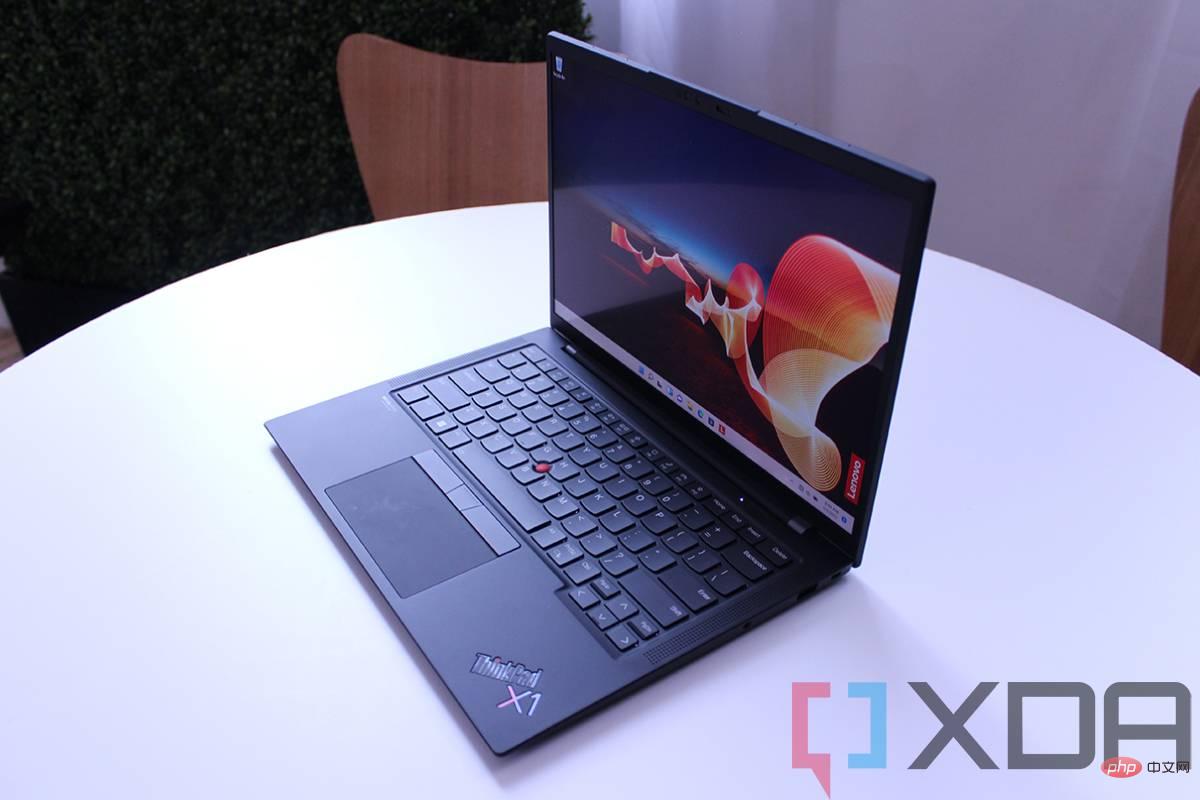
As for ports, there’s no doubt that the Lenovo ThinkPad X1 Carbon is the clear winner. It has two 2 x Thunderbolt 4 (USB Type-C) ports, two 2 x USB 3.2 Gen 1 Type-A ports, one HDMI 2.0b port along with a 3.5mm headphone jack and a nano sim slot. The MacBook Air, on the other hand, only comes with two USB 4/Thunderbolt USB Type-C ports and a 3.5mm headphone jack. While both laptops lack a few ports, including an SD card reader, the ThinkPad X1 Carbon Gen 10 is your best choice if you don't want to deal with adapters.
Connectivity options on the Lenovo ThinkPad X1 Carbon Gen 10 include support for WiFi 6E, Bluetooth 5.2, and optional cellular options such as 5G sub-6 Cat2o and 4G LTE Cat16. MacBook Air only supports WiFi 6 and Bluetooth 5, so keep that in mind.
Which one should you buy?
From a comparison point, we think the ThinkPad X1 Carbon Gen 10 is significantly better than the MacBook Air in some key areas. For starters, the display on the ThinkPad X1 Carbon is great. It has a slightly larger display, and Lenovo offers more options, including a higher-resolution panel. However, both laptops have 16:10 aspect ratio displays, so there's no difference. The Lenovo ThinkPad X1 Carbon also excels when it comes to port selection and connectivity options. Not to mention, the ThinkPad also has a better webcam, with optional infrared support for Windows Hello.
While we can’t judge performance just yet, the MacBook Air has proven to be quite power efficient thanks to the M1 chip. We'll have more to say about the Lenovo ThinkPad X1 Carbon's power efficiency once we've had a chance to test the P and U-series chips.
Finally, there is also the price difference factor to consider when making a purchasing decision. The MacBook Air starts at $999, while the Lenovo ThinkPad X1 Carbon Gen 10 starts at $1,639. While the base models of both notebooks should be enough to handle just about any day-to-day workload, the MacBook Air is generally considered better in this regard because you essentially get the same general performance on all models. The only thing different about the MacBook is unified memory and storage. This also applies to the display, as even with the base model of the MacBook Air, you get a sharper display compared to the 1920×1200 panel of the base model of the ThinkPad X1 Carbon.
The above is the detailed content of Lenovo ThinkPad X1 Carbon Gen 10 vs. Apple MacBook Air: Which is better?. For more information, please follow other related articles on the PHP Chinese website!

Hot AI Tools

Undresser.AI Undress
AI-powered app for creating realistic nude photos

AI Clothes Remover
Online AI tool for removing clothes from photos.

Undress AI Tool
Undress images for free

Clothoff.io
AI clothes remover

AI Hentai Generator
Generate AI Hentai for free.

Hot Article

Hot Tools

Notepad++7.3.1
Easy-to-use and free code editor

SublimeText3 Chinese version
Chinese version, very easy to use

Zend Studio 13.0.1
Powerful PHP integrated development environment

Dreamweaver CS6
Visual web development tools

SublimeText3 Mac version
God-level code editing software (SublimeText3)

Hot Topics
 1378
1378
 52
52
 deepseek ios version download and installation tutorial
Feb 19, 2025 pm 04:00 PM
deepseek ios version download and installation tutorial
Feb 19, 2025 pm 04:00 PM
DeepSeek Smart AI Tool Download and Installation Guide (Apple Users) DeepSeek is a powerful AI tool. This article will guide Apple users how to download and install it. 1. Download and install steps: Open the AppStore app store and enter "DeepSeek" in the search bar. Carefully check the application name and developer information to ensure the correct version is downloaded. Click the "Get" button on the application details page. The first download may require AppleID password verification. After the download is completed, you can open it directly. 2. Registration process: Find the login/registration portal in the DeepSeek application. It is recommended to register with a mobile phone number. Enter your mobile phone number and receive the verification code. Check the user agreement,
 Why can't the Bybit exchange link be directly downloaded and installed?
Feb 21, 2025 pm 10:57 PM
Why can't the Bybit exchange link be directly downloaded and installed?
Feb 21, 2025 pm 10:57 PM
Why can’t the Bybit exchange link be directly downloaded and installed? Bybit is a cryptocurrency exchange that provides trading services to users. The exchange's mobile apps cannot be downloaded directly through AppStore or GooglePlay for the following reasons: 1. App Store policy restricts Apple and Google from having strict requirements on the types of applications allowed in the app store. Cryptocurrency exchange applications often do not meet these requirements because they involve financial services and require specific regulations and security standards. 2. Laws and regulations Compliance In many countries, activities related to cryptocurrency transactions are regulated or restricted. To comply with these regulations, Bybit Application can only be used through official websites or other authorized channels
 Sesame Open Door Trading Platform Download Mobile Version Gateio Trading Platform Download Address
Feb 28, 2025 am 10:51 AM
Sesame Open Door Trading Platform Download Mobile Version Gateio Trading Platform Download Address
Feb 28, 2025 am 10:51 AM
It is crucial to choose a formal channel to download the app and ensure the safety of your account.
 gate.io sesame door download Chinese tutorial
Feb 28, 2025 am 10:54 AM
gate.io sesame door download Chinese tutorial
Feb 28, 2025 am 10:54 AM
This article will guide you in detail how to access the official website of Gate.io, switch Chinese language, register or log in to your account, as well as optional mobile app download and use procedures, helping you easily get started with the Gate.io exchange. For more tutorials on using Gate.io in Chinese, please continue reading.
 Sesame Open Door Exchange App Official Download Sesame Open Door Exchange Official Download
Mar 04, 2025 pm 11:54 PM
Sesame Open Door Exchange App Official Download Sesame Open Door Exchange Official Download
Mar 04, 2025 pm 11:54 PM
The official download steps of the Sesame Open Exchange app cover the Android and iOS system download process, as well as common problems solutions, helping you download safely and quickly and enable convenient transactions of cryptocurrencies.
 How to find the download link of Ouyi okx Android and Apple
Feb 21, 2025 pm 05:39 PM
How to find the download link of Ouyi okx Android and Apple
Feb 21, 2025 pm 05:39 PM
Ouyi OKX is a world-leading cryptocurrency exchange that provides users with a safe and convenient trading experience. Users can download Ouyi OKX's mobile apps, including Android and Apple versions through official channels.
 How to install and register an app for buying virtual coins?
Feb 21, 2025 pm 06:00 PM
How to install and register an app for buying virtual coins?
Feb 21, 2025 pm 06:00 PM
Abstract: This article aims to guide users on how to install and register a virtual currency trading application on Apple devices. Apple has strict regulations on virtual currency applications, so users need to take special steps to complete the installation process. This article will elaborate on the steps required, including downloading the application, creating an account, and verifying your identity. Following this article's guide, users can easily set up a virtual currency trading app on their Apple devices and start trading.
 Compilation and installation of Redis on Apple M1 chip Mac failed. How to troubleshoot PHP7.3 compilation errors?
Mar 31, 2025 pm 11:39 PM
Compilation and installation of Redis on Apple M1 chip Mac failed. How to troubleshoot PHP7.3 compilation errors?
Mar 31, 2025 pm 11:39 PM
Problems and solutions encountered when compiling and installing Redis on Apple M1 chip Mac, many users may...




